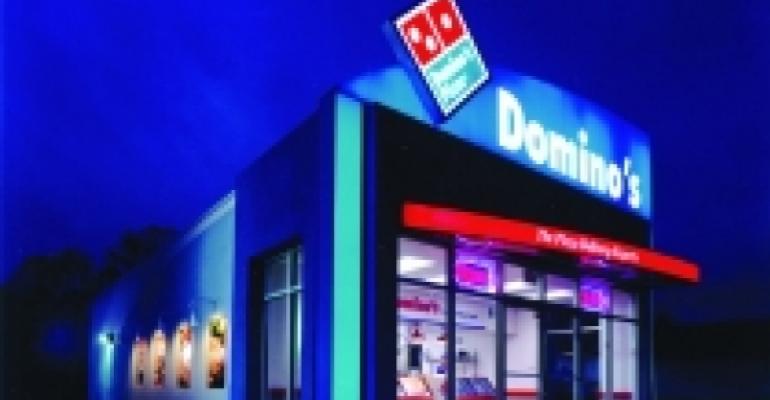A group of experts on celiac disease on Thursday said Domino’s Pizza is exploiting and misusing the term “gluten free” and called on the restaurant industry to use proper labeling to avoid causing serious harm.
Last week, Domino’s became the nation’s largest pizza chain to offer a “gluten-free” crust in its nearly 5,000 U.S. locations. The pizza crust is made without wheat, rye or barley, the three sources of gluten protein that can cause health problems for those with celiac disease or gluten sensitivity.
Domino’s, however, does not recommend the gluten-free crust for those with celiac disease because of possible cross-contamination in restaurant kitchens. A disclaimer is posted on the chain’s website, and the chain worked with the National Foundation for Celiac Awareness in developing the product.
Instead, Domino’s describes the crust as an option for those with gluten sensitivity, who may not be as concerned about cross contamination.
The North American Society for the Study of Celiac Disease, or NASSCD, however, said Thursday that Domino’s use of the term gluten-free is “exploitation” and “a total disservice” to those most at risk.
“A product is either gluten-free or it is not,” said Dr. Stefano Guandalini, NASSCD’s president and founder and medical director of the Celiac Disease Center at the University of Chicago Comer Children’s Hospital.
The NASSCD is a group representing scientists, physicians and healthcare providers whose primary concern in this issue is the safety of patients, he said.
Domino’s use of the term “gluten free” could be dangerous, Guandalini said.
For people with celiac disease, an autoimmune disease that can damage the small intestine, even a small amount of gluten — as little as 10 milligrams in a day — can trigger a reaction. Repeated exposure can have grave consequences, including infertility or even cancer.
Part of the problem, said Guandalini, is that the U.S. Food and Drug Administration has yet to establish a legal definition for the term “gluten free.”
The FDA has proposed standards that include a gluten limit of no more than 20 parts per million for any product to qualify as gluten free. NASSCD has endorsed that definition, but the FDA has yet to finalize the rules.
Meanwhile, the National Foundation for Celiac Awareness, or NFCA, has developed a credential and training program to help restaurants understand the needs of customers on a medically necessary gluten-free diet.
Alice Bast, NFCA’s president, said the group agrees with NASSCD that the “gluten-free” claim should only be used by restaurants that are “confident their product is gluten free.”
Domino’s new crust, for example, has earned what the NFCA calls an “amber” credential, meaning the product is safe for the gluten sensitive but not for those with celiac disease. A “green” credential would apply to products appropriate for those with celiac disease. Guandalini, however, said science doesn’t support that kind of two-tiered designation and it could confuse matters even more.
Little is known about what is called gluten sensitivity — people who have a reaction to gluten, though they don’t have celiac disease or an allergy, he noted. “We don’t know enough about the condition to say you can have a little gluten, that it may not hurt you after all,” he said.
Even those with celiac disease could be tempted to try Domino’s new crust, despite the chain’s disclaimers, because it is labeled gluten free, Guandalini asserts. “There should be no need for disclaimers,” he said. “The threshold has to be set at the same level for everybody” for the term 'gluten free' to be meaningful."
Tim McIntyre, a spokesman for Domino’s, said the chain has been “extraordinarily forthcoming” about the fact that the gluten-free crust should not be eaten by people with celiac disease, but media coverage of the product launch has not always included that information. “We have received many thanks from customers with mild gluten sensitivity and from those following a gluten-free diet,” he said. “We understand and appreciate the disappointment of those with the disease, but we wanted to be honest and transparent.
“We’re not ever going to imply that this product is right for those diagnosed with celiac disease,” he added. “We cannot help it if some media outlets neglect to include that information in their coverage of the story.”
Guandalini pointed to Chuck E. Cheese’s as a restaurant company that is using the term “gluten free” the right way.
Chuck E. Cheese’s parent CEC Entertainment Inc. last week said it is testing gluten-free products for possible national rollout.
A gluten-free pizza, for example, is manufactured in a gluten-free facility and sent to stores frozen, in pre-sealed packaging. The pizza is cooked in the packaging and opened at the table, to avoid cross-contamination in the kitchen.
As restaurants jump onto the gluten-free bandwagon, Guandalini said he hoped more would consider CEC’s approach.
“What CEC is doing is clean and rigorous,” he said. “They are in compliance with the way the scientific community would think about it.”
Contact Lisa Jennings at [email protected]
Follow her on Twitter @livetodineout

